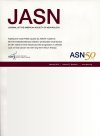Grainyhead-like 2 Deficiency and Kidney Cyst Growth in a Mouse Model
Our study reveals segment-specific mechanisms in cystic kidney disease and suggests Grhl2 as a modifier of collecting duct–derived cyst progression.Our data demonstrate that genetic deletion of Grhl2 accelerates disease progression in a cystic mouse model.
Background
The transcription factor grainyhead-like 2 (GRHL2) plays a crucial role in maintaining the epithelial barrier properties of the kidney collecting duct and is important to osmoregulation. We noticed a reduction in GRHL2 expression in cysts derived from the collecting ducts in kidneys affected by autosomal dominant polycystic kidney disease (ADPKD). However, the specific role of GRHL2 in cystic kidney disease remains unknown.
Methods
The functional role of the transcription factor Grhl2 in the context of cystic kidney disease was examined through analysis of its expression pattern in patient samples with ADPKD and generating a transgenic cystic kidney disease (TCKD) mouse model by overexpressing the human proto-oncogene c-MYC in kidney collecting ducts. Next, TCKD mice bred with collecting duct–specific Grhl2 knockout mice (Grhl2KO). The resulting TCKD-Grhl2KO mice and their littermates were examined by various types of histological and biochemical assays and gene profiling analysis through RNA sequencing.
Results
A comprehensive examination of kidney samples from patients with ADPKD revealed GRHL2 downregulation in collecting duct–derived cyst epithelia. Comparative analysis of TCKD and TCKD-Grhl2KO mice exhibited that the collecting duct–specific deletion of Grhl2 resulted in markedly aggravated cyst growth, worsened kidney dysfunction, and shortened life span. Furthermore, transcriptomic analyses indicated sequential downregulation of kidney epithelial cyst development regulators (Frem2, Muc1, Cdkn2c, Pkd2, and Tsc1) during cyst progression in kidneys of TCKD-Grhl2KO mice, which included presumed direct Grhl2 target genes.
Conclusions
These results suggest Grhl2 as a potential progression modifier, especially for cysts originating from collecting ducts.




